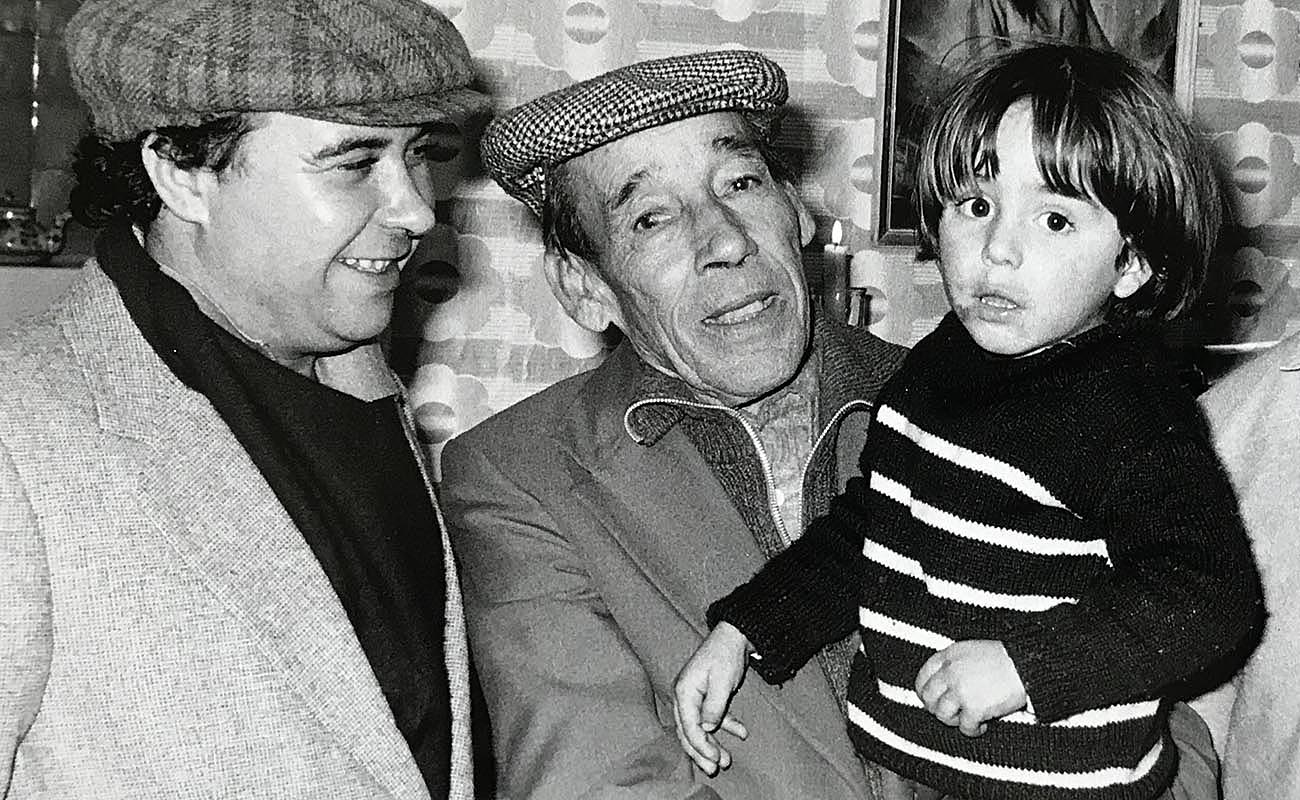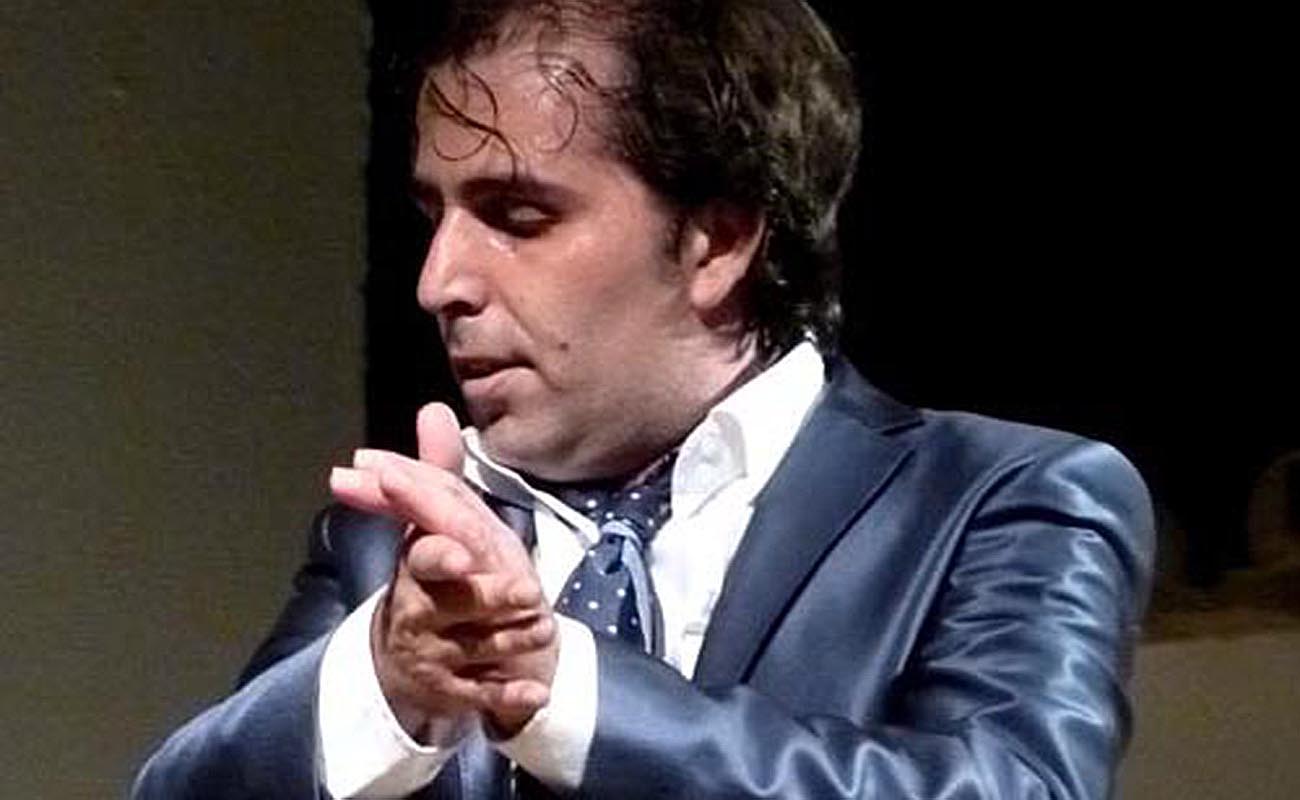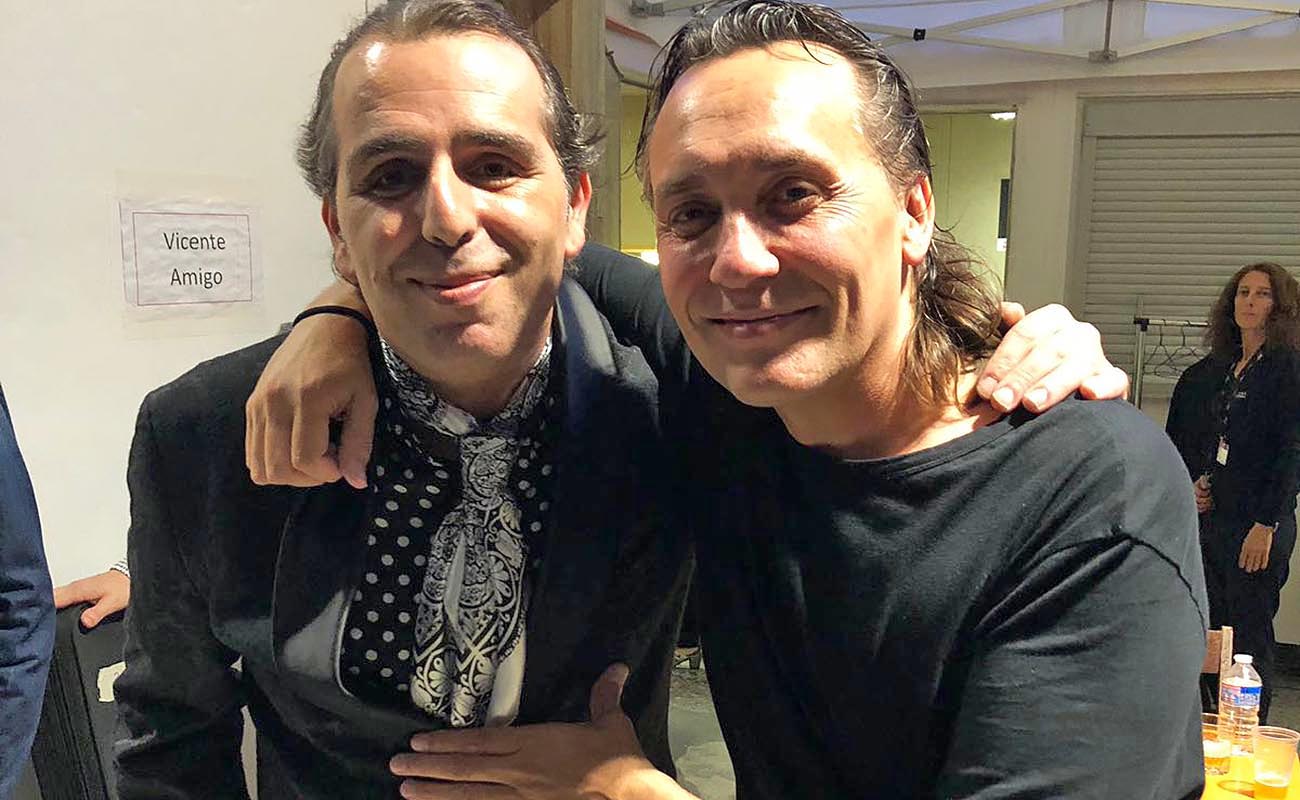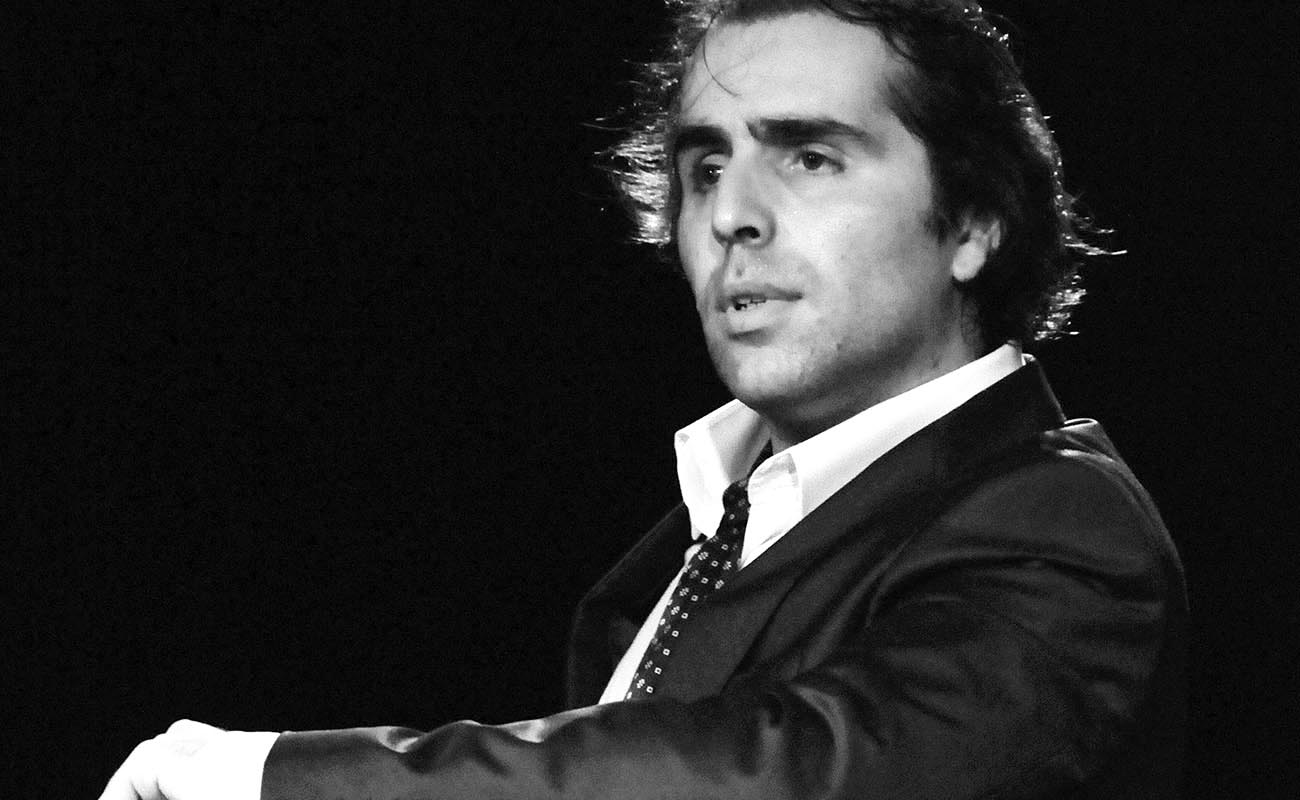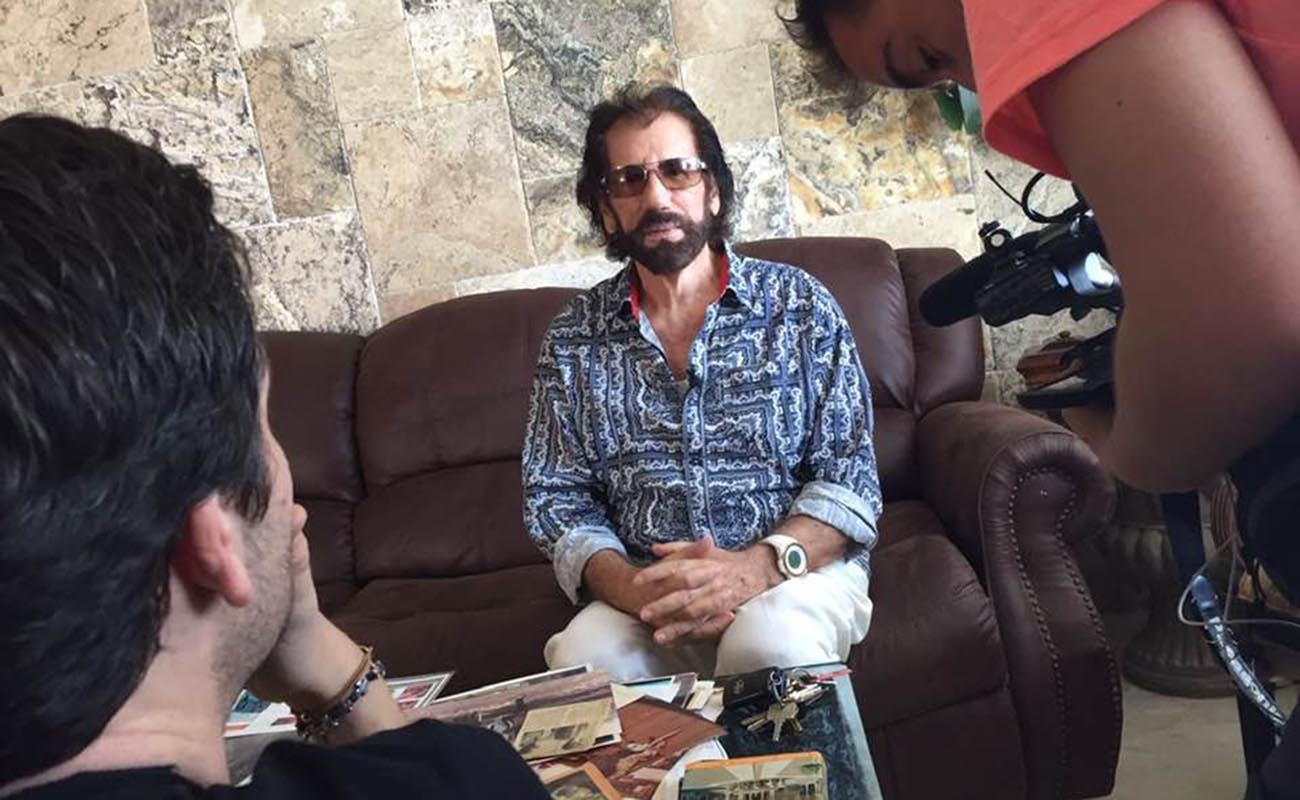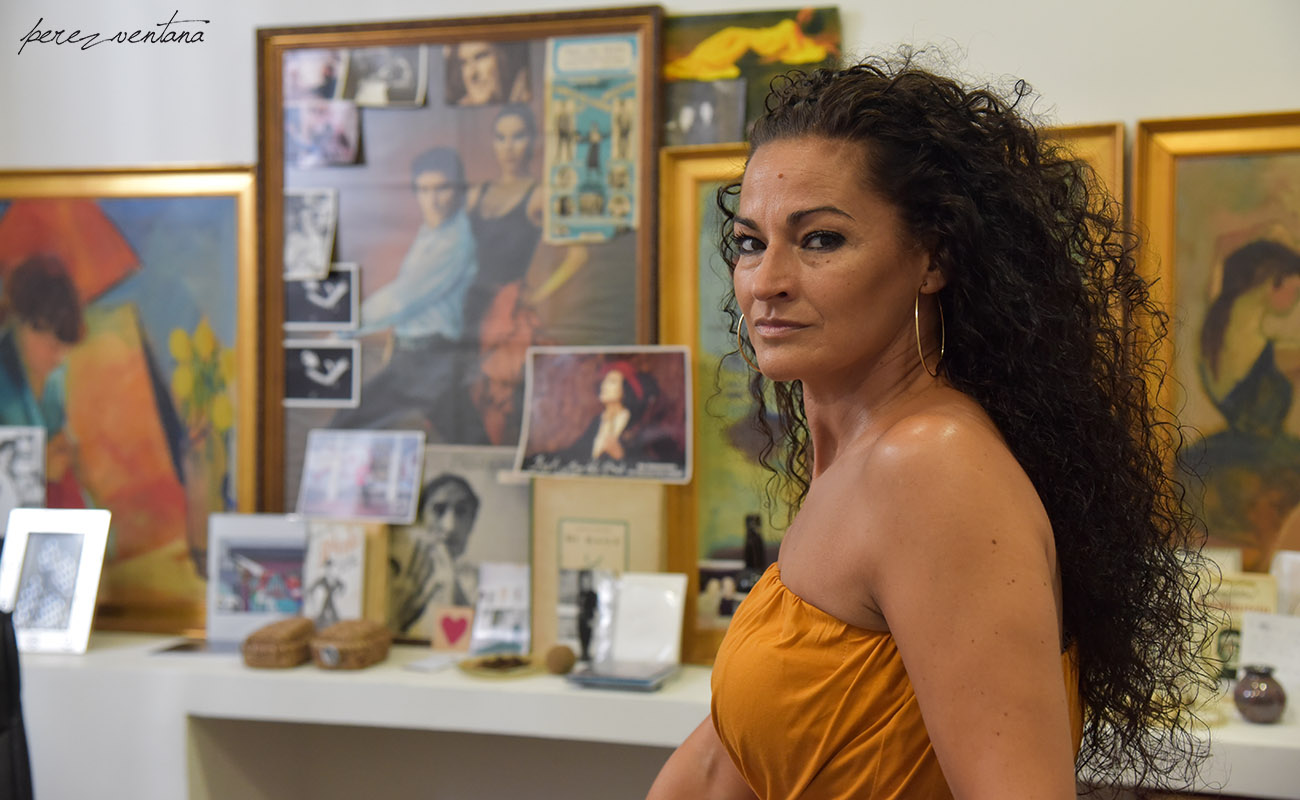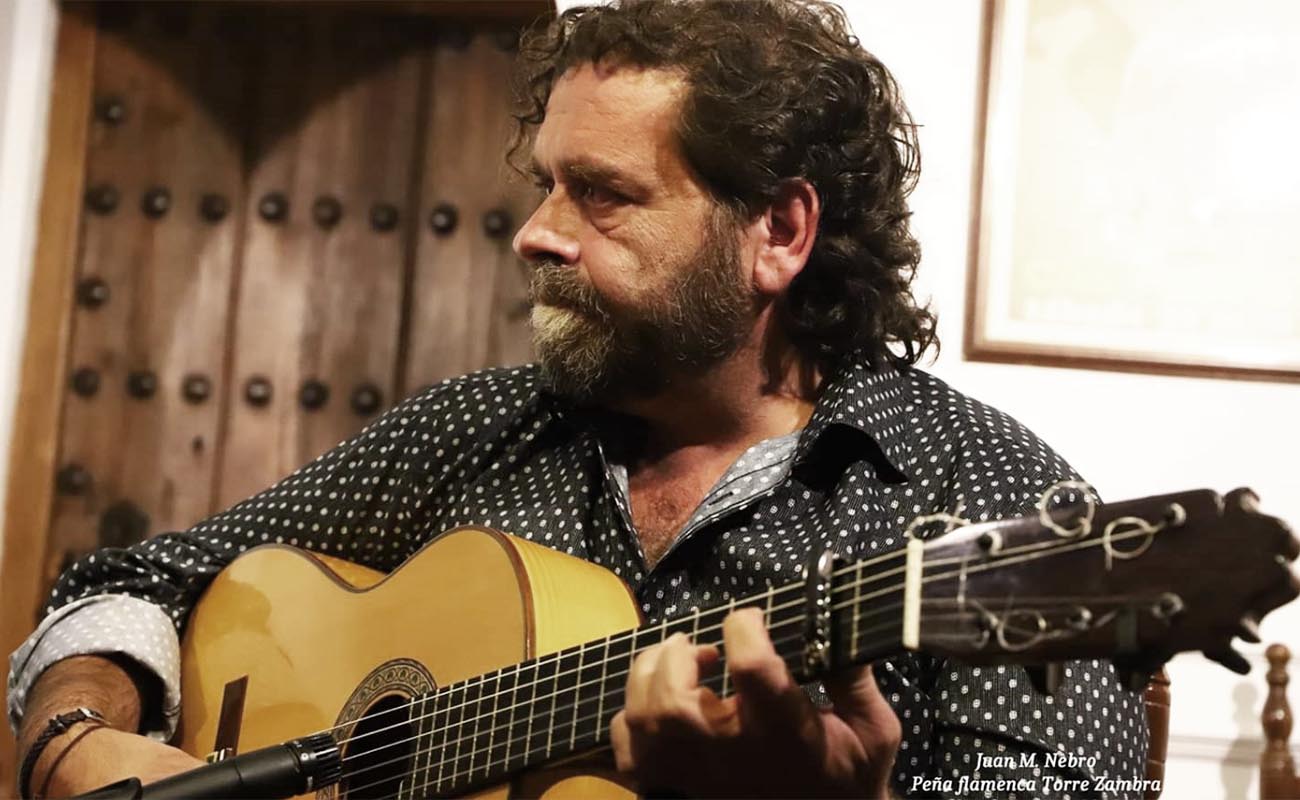Pepe Torres, flamenco dancer
In the interview that follows, Pepe articulately explains his beginnings, his goals, concepts, inspiration and the inevitable fears that have become installed in the minds of performing artists everywhere.
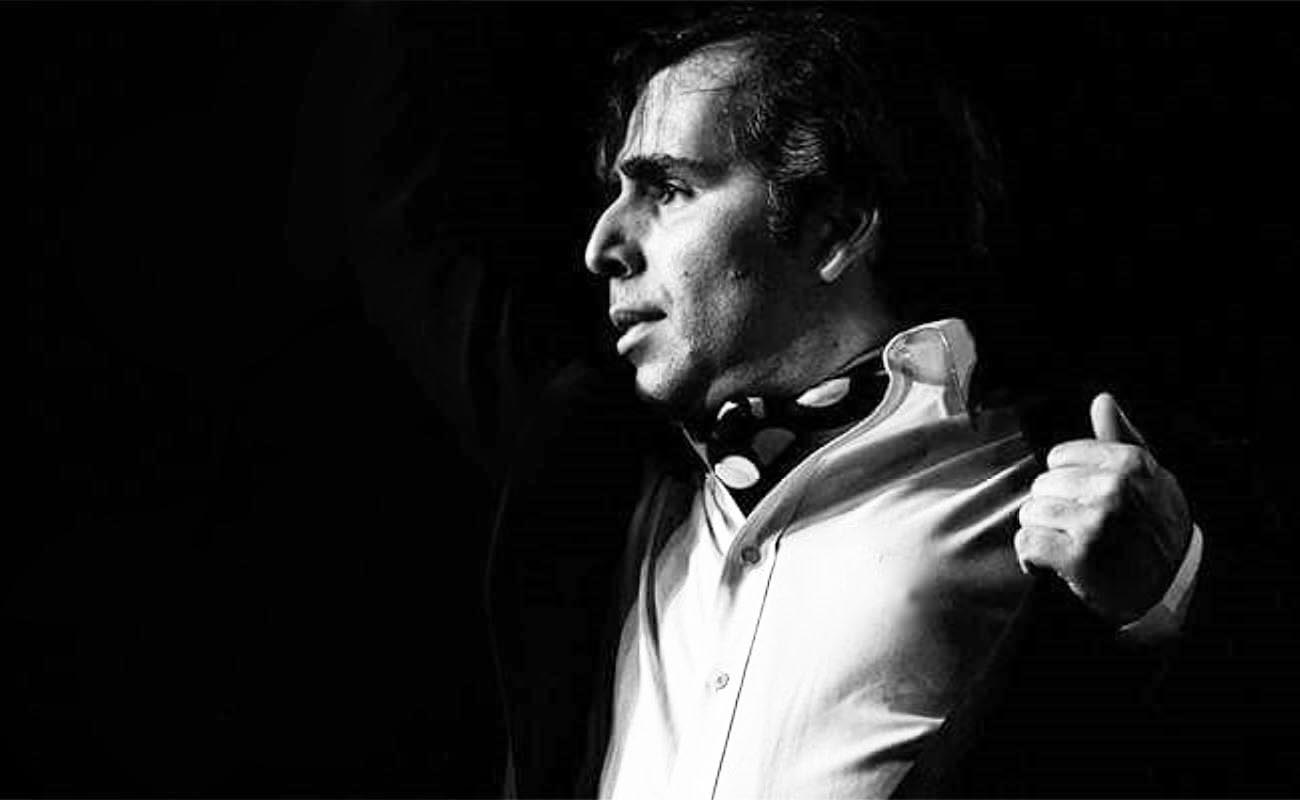
When you start asking around, you may be surprised to discover that soft-spoken Pepe Torres (Morón de la Frontera, 1978) is many people’s favorite bailaor. His serene flamenco presence bridges the zone from classic elegance to a point in the future others strive to reach through crazy perfect technique, and percussive fireworks. And the voice in your head says: no, that’s not the path, flamenco is above that.
In the text that follows, Pepe articulately explains his beginnings, his goals, concepts, inspiration and the inevitable fears that have become installed in the minds of performing artists everywhere.
BEGINNINGS
All the memories that make up my childhood with flamenco are the reason I knew this was my life, and what I wanted to do. There is no greater gift that to feel and live out your passion.
At the age of 3 or 4, they used to put me up on a table in my house, and my mother sang for me, my people, you know, in a gypsy home it’s very common to encourage the children with rhythm, “let’s go, ole ole, get those arms up…” It makes no difference if they dance well or not [laughter]. I think I was born to dance, because as far back as I can remember, I loved it. Later on, I danced at the parties at home, self-taught until a bit later on, still a youngster, I began to take it seriously and learn from everything that surrounded me. At 12 I had my first jobs. Dance is inside of me as long as I can recall.
No one ever said “you have to do this”, never. I’ve learned by doing it, very little formal training, mostly just watching a lot, racking my brains studying, many hours, many years! Living the art from an emotional stance, whenever I would see someone dance well, my legs would tremble. My advice to young people starting out is to prepare yourself, knowledge doesn’t take up any room, but prepare yourself to know how to be around flamenco people, and how to listen, enjoy and learn from others.
My inspiration always came from my family. We have the guitar of my uncle Diego del Gastor who is our identity. But there have also been great dancers and singers in the family, such as Pepe Ríos, a great maestro whom I was fortunate enough to see at family gatherings, the dancing of my uncle Andorrano, that of my aunt Niña Amparo who worked with Farruco, Rafael el Negro and Matilde Coral at the Guajiro in the nineteen-fifties. That way of dancing was a big influence, it’s the fountain I drink from, in addition to my cousins Ramón Barrul and Juana Amaya who made me love dance even more. Then I went on to look at many other sources that were out there to learn from, it’s a lifetime commitment.
THE FIESTAS
The informal gatherings are where we came from and where we’re headed. There was always a lot of music at home, it was great. At Christmas we would go from house to house, great camaraderie. When my grandparents were alive, there was a great deal of activity of artists, fans and people from abroad, and always the little parties. I was with my aunts and uncles much of the time, like the first time my uncle Andorrano took me to the Candelaria, and Pedro Bacán, la Cañeta, Manolo Mairena, Manuel Moneo among others were there, and later on, we were often with Gaspar de Utrera, or seeing the first light of day with Fernanda and Bernarda on the avenue of the fair, everyone singing and dancing…endless unforgettable moments with that generation, those maestros who are no longer with us, and the current ones as well, although it’s not as common as before, because times have changed. But when we get together in Triana or Morón, or anywhere else, when the moment comes together, we’re there and we learn from each other and have a great time. Fiestas are necessary, it’s all about sharing.
IMPROVISATION
Improvisation is fundamental so we can all fly free. I improvise about 80 percent of the time I’d say, but don’t think the other 20 percent is unimportant, it represents many hours of rehearsing alone, or with other artists, and a great deal of creative brain-storming about what you want to communicate and express. Especially when it’s your own show of an hour and a half, many months of work go into that. Then when you’re out on stage, improvisation is absolutely necessary within the scheme of things, and always a guiding thread which is flamenco.
LOVE OF FLAMENCO SINGING
I have the genetic makeup of my grandfather Joselero, the memory of his warmth, like that of a father, as he always was for me, I was very small when he passed, but living with him certainly enabled my great love of cante. As children we absorb everything incredibly, I have his voice engrained in my being, my grandfather Joselero is my weakness, and as time passes, I feel this more and more, and I need to listen to him singing and talking.
My Torres side of the family are from La Puebla and Osuna, a line of singers. On my grandmother’s side, the Amayas of the negros de Ronda, I suppose all these things were a powerful influence in my love of flamenco singing. Since childhood I’ve also loved the singing of Perrate, Juan Talega, Manolito de María, Fernanda, Camarón, Chocolate, Tomás Pavón, Pastora… I had the taste of a little old man [laughter], it wasn’t normal for such a young child as I was.
…AND OF THE GUITAR
The guitar is also my passion, six or seven hours a day listening to my uncle Diego de Morón [nephew of Diego del Gastor, son of Joselero], because I grew up in his house. I went to bed and woke up hearing guitar, I owe him the love and respect I have for the instrument. When you’re in love with flamenco dancing, guitar and singing, all this 24 hours a day going through your head, it becomes an obsession [laughter], there aren’t enough hours in the day.
THE INFLUENCE OF THE GREATS
I’m crazy for the art of Anzonini, Paco Valdepeñas, Andorrano, Funi, Marsellés, el Mono…the festeros, there’s a lot to be learned from them, and they’ve always inspired me, I love them.
As a child, I spent some time studying with Manolo Marín. I learned things with him that have served me well over the years, but the in-person maestro who most influenced me was Antonio Montoya “Farruco”, with whom I was fortunate enough to have classes. I’ve been devoted to Farruco since even before seeking him out as a teacher, he’s always been a very important figure for me.
Y con el baile de Rafael el Negro también muero, cada día me gusta más y trato de aprender de su forma de bailar y estar en el escenario, el arte puro de Triana, elegante y muy gitano. Me han inspirado muchos artistas, casas bailaoras como las de Angelita Vargas y su familia, Manuela Carrasco y su familia, pero si tengo que decir así rápido tres bailaores que he seguido mucho son El Tio Farruco, Ramon Barrul y Juan Ramírez entre otros grandes.
I’m also devoted to the dancing of Rafael el Negro, more and more every day, and I try to learn from his way of dancing, and his stage presence, the essence of Triana, elegant and very gypsy. Many artists have inspired me, families such as those of Angelita Vargas, Manuela Carrasco, but if I have to quickly come up with the names three dancers, they would be Farruco, Ramón Barrul and Juan Ramírez.
My cousins were like brothers and sisters, we all grew up together on the same street. My uncle Andorrano, although he’s long been retired from the profession, is singing better than ever now, with his voice in great shape and the knowledge that comes from years of experience. In the privacy of the family we can get him to sing siguiriiyas of el Loco Mateo, or things his father Joselero used to sing, or Juan Talega, or bulerías. People sometimes tell me I look like him dancing. I love him, he’s my artistic guide. He took me out to dance the first time in the Gazpacho festival when I was a child, and El Pele sang for me. In later years, after the Gazpachos, we would go out to a place on the outskirts of Morón where the fiesta would continue all night with Gaspar de Utrera, Fernanda… One morning the sun came up with the guitar of Diego de Morón and the dancing of Juana, the sister of Pepa de Utrera. These are things you never forget.
FARRUQUITO
Juan Farruquito is a genius of flamenco dance, he’s been touched with a magic wand. I worked with him nearly 20 years ago. We toured the United States, a great tour, and the times I’ve been able to share the stage with him, I’ve learned a great deal from his dancing and his way of being, for me it was sheer pleasure to be with a dancer I’d admired since childhood, who has influenced my generation and in the younger one as well, in all flamenco. He keeps the dream of this art alive.
“SON DE LA FRONTERA”
People ask me what happened with Son de la Frontera (music group founded in 1998). That was a very nice project, we had a lot of work in the most important national and international festivals, we rubbed shoulders with great musicians, made two recordings, we received prizes for the records, the live performances, a nomination for the Latin Grammys, named by the BBC, Best Flamenco Group of the Year, performances at the most important theaters such as the Royal Albert Hall, toured the world from South America to the United States, Europe and Spain, wherever we went the audience was vibrating with excitement. I think they saw and felt what a good time we had on stage. We got involved in the world of the recording industry with Nuevos Medios, the late Mario Pacheco who helped us a lot. It was an intense time of promos, concerts, press conferences…about 8 years in all.
A COMPANY
Ever since 2004, I began mounting large format shows in France, Spain and the United States where I presented my show El Baile Flamenco de Pepe Torres in New York, thanks to Nina Menéndez at the Festival Flamenco Gitano. A group of 15 people including musicians, guest artists, sound and lighting technicians. I’ve taken my own company to festivals such as those of Nimes, Mont de Marsan, Albuquerque, Suma Flamenca en Madrid, just to name a few. But if we’re talking about a company in the sense of institutional support to carry out bigger, more costly shows, I’ve never had that kind of backing to do shows and express my ideas, everything’s been self-produced.
THE AVANT GARDE
As a professional in this, I more or less keep up to date regarding developments in the world of flamenco dance. Other tendencies, I don’t actually follow that much, there are some things I like more than others, but always within my own personal taste, and from the point of respect deserved by every performing artist who devotes a lifetime to this. I would never dare to do anything removed from what I know and feel, I’d be fooling myself and the audience, and what we need today in flamenco is honesty. I’ll keep fighting to put my grain of sand, which may be better or worse, but always I can say that what I do is called “flamenco”.
TABLAO OR THEATER?
It depends on the moment. The tablao is your day-to-day work, I’ve been working in tablaos all my life, mostly in Los Gallos in Seville, which has been like my second home, the place where, night after night, I’ve measured myself and learned a great deal from all the other artists. The tablao makes you get cracking, that’s why it’s so important, aside from being your income. For artists, it’s a way of maturing artistically. But in a theater, there’s a special magic, an expansiveness that lets you move around the stage and dance for a different kind of audience, it’s another atmosphere. But without a doubt, there are magical moments in either place.
THE COVID CRISIS
If I don’t dance I feel like something is missing, which is why, with what we’re going through now, it’s very difficult emotionally, because dance is my life.
This year 2020 was shaping up great, with seven summer festivals signed, a tour of Japan, and in September we were going to be in Fernando Gonzálex Caballos’ festival where I was going to dance one night with Farruquito and José Maya, and another night with Juan de Juan and Jairo Barrul, but with the Covid situation, everything was put on hold. I can only hope that later on we pick up where we left off.
Now we’re going to be at the III Bienal de Arte Flamenco Canela de San Roque with the Pañeros and the Canela family on October 10th. For the end of October I’ve also got an interesting thing in Madrid, but we’re waiting to hear how things go.
It’s very worrisome. The health concerns, so many victims, and you wonder, how can I protect myself and others? I also worry about people’s mental and spiritual health. What’s going to happen in the world of culture? So many people who make a living from this and who are out of work, but worst of all is not knowing when there’ll be a return to normalcy,
I hope we’re able to adapt to the time. I’ve been giving online classes for Japan since the pandemic began, because I have a lot of fans there who understand what I do, but it’s too early to draw conclusions.
Every day I pray that things return to the way it was before. Young artists are seeing their artistic process interrupted. We all have to fight for flamenco, and not fall into despair, because the feeling of joy is fundamental for creativity. I’m trying to take advantage of this downtime to prepare a show I’d like to present next year, if health and circumstances permit.
Right now, if I had to dance, somewhere, to tell the truth, it’s a little scary. But aside from having to work in order to survive, I feel obligated to do it for flamenco which gives me so much, and is my life.


